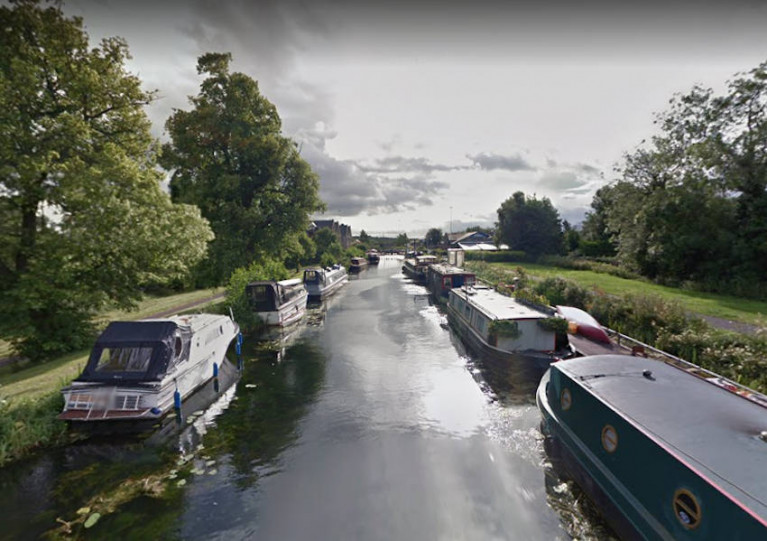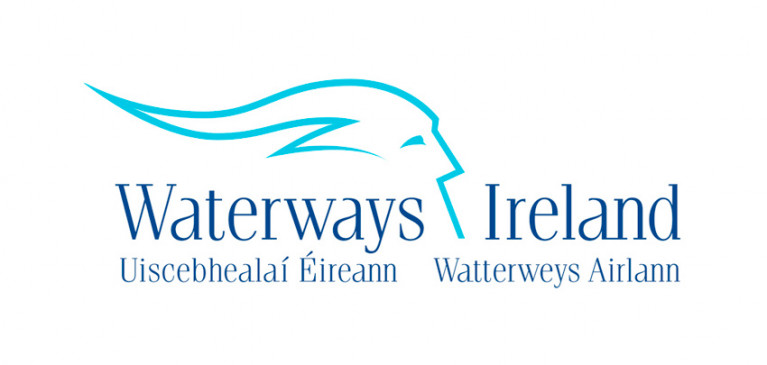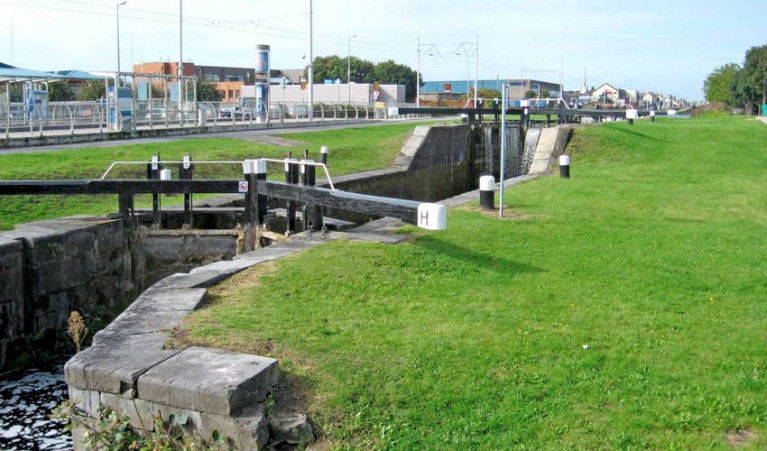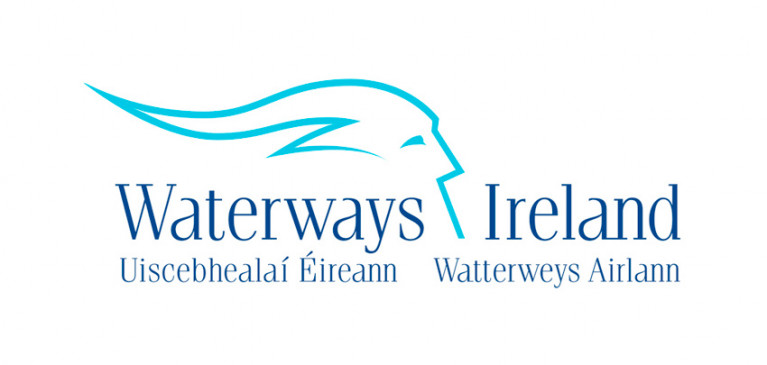Displaying items by tag: Grand Canal
Waterways Ireland has committed to looking for a long-term solution for people living on houseboats on the Grand Canal, it has emerged.
The news comes after last week’s final-hour reprieve for a number of barge owners who had faced eviction under the current by-law which prohibits mooring in any one spot for longer than five consecutive days.
They also faced the prospect of losing their vessels under original plans to lift them from the canal and impound them for a month before selling them off.
New Minister of State for Heritage, Malcolm Noonan, stepped in to assure these barge owners that theirs and others’ “genuine or legitimate houseboats or so-called ‘live-ons’” would not be removed.
He added that Waterways Ireland, the cross-border body that manages Ireland’s inland waterways, would now engage “in a collaborative process with all stakeholders around finding a long-term, sustainable solution to regularise the use of the canals”.
This is in addition to Waterways Ireland’s 10-year strategic review, which is expected to be available for consultation later this year — and will consider the likes of new infrastructure on the canal to cater for the requirements of houseboats.
TheJournal.ie has more on the story HERE.
‘Reprieve’ For Houseboat Owners On Grand Canal Under Orders To Move Or Lose Their Homes
It’s understood that an order to remove houseboats moored on the Grand Canal in Dublin this week hay have been rescinded.
Yesterday, TheJournal.ie reported that a number of people with floating homes on the canal in Dublin’s south inner city faced eviction this week under by-laws that restrict mooring to five days in any one place along the waterways.
Four current boatowners in the Portobello area said they had lobbied Waterways Ireland and politicians for changes to the law that could help towards easing the current housing crisis.
They pointed out that the waiting list for berths at Grand Canal Dock — where a number of houseboats have permanent moorings — have topped 200 applications, and suggest that there is room along the navigation in the city for much more than the two dozen houseboats moored at present.
Waterways Ireland had been set this week to remove the boats into storage for a month before selling them off, they claim.
But the Dublin branch of the Inland Waterways Association of Ireland (IWAI) says it understands that the new Government department responsible for the waterways has rescinded these lifting orders.
Speaking to RTÉ Radio 1’s Liveline this afternoon, Beau Donelly and Jacqui Thompson said that while nothing had been received in writing, the new Minister of State for Heritage, Malcolm Noonan, has taken the decision to suspend their eviction pending future discussions with related stakeholders.
This story was updated to include reference to this afternoon's Liveline segment.
Waterways Ireland advises the public that the towpath on the south bank of the Grand Canal east of Tullamore between Cappincur and Ballycommon will be closed for three months for upgrades.
The path from Digby Bridge and Ballycommon Bridge will be closed to all users from this Monday 8 June to Monday 7 September to facilitate construction of the Grand Canal Greenway.
As previously reported on Afloat.ie, locks on the Grand and Royal canals as well as the Barrow Line and Navigation, the Shannon-Erne Waterway and Shannon Navigation are set to reopen (subject to maintenance) from this Monday.
This coincides with the beginning of Phase 2 of the country’s relaxing of coronavirus restrictions.
Sewer Line Repairs Completed On Grand Canal In Dublin
Repair works have now been completed on the broken sewer line between Locks 1 and 2 on the Grand Canal in Dublin.
Navigation between the locks was closed after the incident last summer which saw the partial collapse of a trunk sewer at Suir Road, west of St James’ Hospital in the city.
Works had been expected to finish in spring but Waterways Ireland announced their delay in early March, citing “a number of factors … outside of Waterways Ireland control”.
Passage in and out of Dublin on the Grand and Royal Canals remains closed until coronavirus restrictions are lifted. It’s expected an announcement on this will be made soon.
For those of you missing Ireland’s inland waterways, you can now view the stunning Royal Canal, Grand Canal Barrow Line and Barrow Navigation along with the Shannon through Google Maps and Google Earth.
Waterways Ireland, in partnership with the Google Trekker Loan Programme, has continued to capture Ireland’s inland waterways and make them accessible online.
Last year, street view imagery was captured along the Royal Canal, Grand Canal Barrow Line and Barrow Navigation to compliment the stunning Shannon imagery captured in 2018.
So now you can follow some of Ireland’s most beautiful and popular waterways destinations from the comfort of your own home — and hopefully plan a visit when conditions allow.
As previously reported on Afloat.ie, winter mooring has been extended until Sunday 31 May to ease the pressure on the inland boating community amid the current coronavirus restrictions.
And while the outdoor exercise distance has been extended to 5k from home, the advice for those using canal towpaths to maintain social distancing remains in place.
Waterways Ireland Suspends All Passage In & Out Of Dublin On Royal & Grand Canals Until Further Notice
Waterways Ireland has issued notice to masters and owners of vessels that boat passage into or out of Dublin on the Grand Canal and Royal Canal will be postponed until further notice.
This postponement also applies to bookings for Newcomen Bridge passage on the Royal Canal.
The cross-border body for Ireland’s inland waterways adds that navigations elsewhere are generally remaining open for boats.
Albert Lock and the Jamestown Canal on the Shannon Navigation recently reopened after lock gate replacement works and the easing of flooding issues.
Waterways Ireland has announced that works to repair a broken sewer line in the Grand Canal at Inchicore will not be completed until the end of May.
Navigation between Locks 1 and 2 will remain closed after the incident last summer which saw the partial collapse of a trunk sewer at Suir Road, west of St James’ Hospital in the city.
The cross-border body for Ireland’s inland waterways added: “As the works to the sewer are dependent on a number of factors and are outside of Waterways Ireland control, this date cannot yet be confirmed but updates will be issued when available.”
Boat passage arrangements for both the Grand Canal and Royal Canal in and out of Dublin were recently announced ahead of the 2020 boating season, which begins later this month.
Details On Canal Passage In & Out Of Dublin For 2020
Waterways Ireland reminds masters and owners of boat passage arrangements in or out of Dublin on the Royal and Grand Canals ahead of the start of the 2020 boating season in mid-March.
Movements in or out of the city via the waterways will be organised by prior arrangement, to take place as a single movement in one day.
Boaters will only be facilitated if their passage is considered to be safe by Waterways Ireland and they have the valid permit(s) for mooring and passage.
In order to plan the necessary lock assistance for movements east of Lock 12 on either canal, masters are required to contact the Waterways Ireland Eastern Regional Office (weekdays 9.30am to 4.30pm) on 01 868 0148 or email [email protected] prior to making passage.
At time of making contact, the following details should be provided:
- Length, beam, water & air drafts of your craft (provide approximates if don't have exact dimensions)
- Phone/email contact details
- Permit number and expiry date of current canal permit
On the Grand Canal, a minimum of two days’ notice prior to planned passage must be given and, with the exception of pre-arranged events, a maximum of two boats per day will be taken through the locks, travelling either east or west. In certain circumstances, eg for slower or larger barges, the limit will be one boat per day.
Due to periodic anti-social activity along some of canal route into Dublin, boat passage will also not be possible in certain weather conditions and at weekends over the late spring and summer period. This can be planned for at time of making contact, and suitable arrangements for passage made.
On the Royal Canal, two weeks’ notice of bridge passage (Newcomen Lifting Bridge) is required for the pre-set lift date, and lock assistance will then also be arranged. A minimum of two boats is required for a bridge lift to go ahead. A maximum number of boats passing will be implemented, 16 for weekend lifts and eight for weekday lifts. Priority will be given on a first come, first served basis.
The pre-set lift dates and times are set out below:
- Thursday 16 April, 11am–1pm
- Sunday 3 May, 9am–1pm
- Saturday 30 May, 9am–1pm
- Thursday 11 June, 11am–1pm
- Friday 26 June, 11am–1pm
- Tuesday 28 July, 11am–1pm
- Tuesday 25 August, 11am–1pm
- Thursday 24 September, 11am–1pm
Masters and owners are also reminded to ensure that they have the following before making the passage through the city locks on both canals. Waterways Ireland reserves the right to postpone passage to another day if all of these are not in place:
- Adequate fuel on board
- Competent and adequate crew to operate the boat and locks (minimum crew of 3)
- A lock key on board their boat
- Mooring lines of adequate length to handle vessel through a lock (approx 15m length)
- No known mechanical problems with their boat
Passages can only be arranged in the boating season from mid-March to end of October. Also note that aquatic weed is generally more prevalent as the season progresses beyond Spring and may hamper passage.
Boaters will be facilitated as far as practicable although Waterways Ireland cannot guarantee that passage will be possible on every planned date. Early contact will greatly assist planning and facilitate the making of the necessary arrangements.
Waterways Ireland advises users of the Grand Canal in the Cappincur area of Tullamore, Co Offaly of interruption to navigation on the inland waterway in the coming weeks.
Water levels will be reduced and navigation will be closed in order to facilitate lock gate replacement works at Lock No 24 from Monday 27 January to Tuesday 17 March.
The news follows the previous announcement of reduced water levels in the Sallins area on the canal’s Naas Line to facilitate gate replacements works on Lock N1.
Reduced Water Levels On Grand Canal Naas Branch
Waterways Ireland advises users of the Grand Canal that water levels will be reduced in the Sallins area (Level 15 from Killeen Golf Club to Digby Bridge) over the coming weeks.
This in order to facilitate lock gate replacement works at Lock N1 on the Naas Line in Co Kildare.
Works on the waterway began on Tuesday 21 January and will be in progress until to Wednesday 1 April.






































































